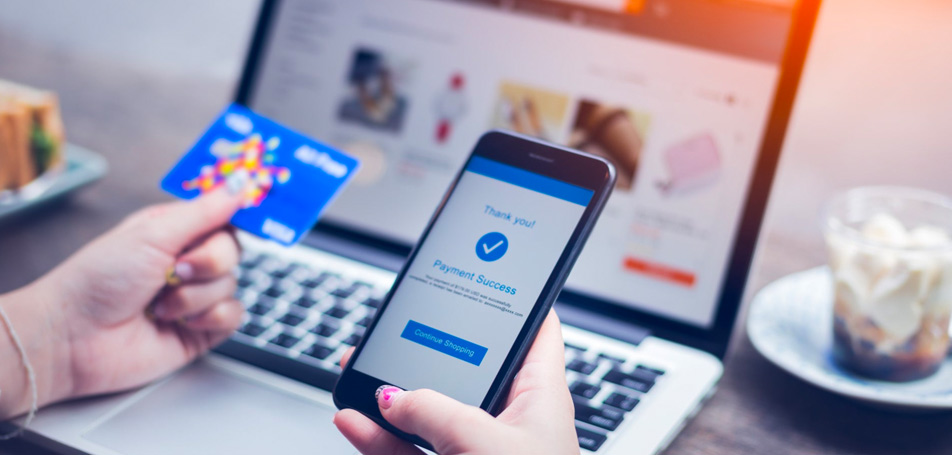
With the holiday shopping season just about to end, it’s the perfect time to start prepping for the next season with some upgrades! When upgrading your digital storefront, there are tons of things to consider, but if you’re selling products online, why not take a look at payment gateways first?
What is a Payment Gateway?
A payment gateway is, in essence, a method online stores use to track, save, and authorize payments digitally. Physical stores accept multiple types of currency, like cash, check, or card, and it’s the cashier’s job to file that payment accordingly so the customer can receive their product. In the digital space, payment gateways are a lot like cashiers and POS systems and work as a middleman between the customer and the business during checkout.
Like a POS station, gateways can temporarily store a shopper’s payment information and history, so they can make returns if necessary. They can also process these transactions offline, so no one has to call a credit card company, and they pair allocated funds with their related transaction. In addition, payment gateways also offer some bonuses, like digital encryption to keep shoppers’ data safe and API integration, so the business won’t have to worry about copying data over manually.
How it Works
A payment gateway works alongside payment processors to communicate with your business’ bank and the customer’s bank. The payment processor is what sets up the initial line of communication between banks; it gathers and stores transaction information and then communicates with the shopper’s bank account and your business’ bank to transfer the appropriate amount of money between them. Payment gateways act as an extra step of encryption to further protect shopper data and synchronize transaction information between all your eCommerce systems. Just about every online store has a payment processor, but not necessarily a payment gateway.
The Payment Process With a Gateway
When a customer makes a purchase, they’ll need to put their payment information into your system. At this point, the gateway takes this information, encrypts it, and sends it to the payment processor. The payment processor then verifies the customer’s card information and uses it to contact their bank for authorization for the transaction. Once the transaction is authorized, the payment processor requests funds. The payment gateway receives a request for payment from the processor and encrypts the transaction details once again, and the information is sent to the merchant’s bank account.
Why Use a Payment Gateway?
Even though your store can get by without a payment gateway, payment gateways bring a lot to the metaphorical table:
Streamlines the Checkout Process
To start, gateways simplify the checkout process on the consumer’s end by temporarily storing their transaction information. Data storage can help users manage product returns, track shipments, and make future purchases much faster. Plus, it provides an extra layer of encryption for the user’s information, which is always nice.
Stores and Manages Information Between Programs
API and other eCommerce integration means that your payment gateway fully communicates with the rest of your eCommerce platform. We usually recommend synching all aspects of your online (and physical) business together to reduce paperwork and give employees more time to do their jobs. Payment gateway compatibility is just another aspect of that.
Allows Customers to Use Multiple Currencies
What most people recognize about payment gateways is that they allow shoppers to use multiple forms of currency when buying things online. Payment gateways work with more than just banks. They also communicate with cryptocurrency companies and credit card companies, so shoppers don’t have to use their bank accounts for every purchase.
Our Favorite Payment Gateways
Every gateway has its pros and cons, but these five are some of our favorites:
- PayPal
PayPal is the oldest and most well-known payment processor in the world, and it comes with a free payment gateway in the form of PayFlow. PayFlow works with major credit companies like Visa, MasterCard, and Discover, and it also has access to currencies from over 20 different countries and even some types of cryptocurrency. PayPal also has a free client-side wallet so that users can store funds in their PayPal account, too.
- Square
Recently, Square has been making waves for small businesses since their tiny, portable card readers are an excellent affordable option for businesses that travel or ones that are just starting out. Square’s payment gateway accepts all major credit cards, as well as Apple Pay and Google Pay. While this service is only available in select countries (the US, UK, Australia, and some parts of Europe), its main downside is that all payments need to be processed through the Square app.
- Amazon Pay
Amazon Pay works best for sellers that partner with Amazon as a retailer. Unlike other payment gateways, Amazon Pay is a widget on a business’ main website. It then processes payments using Amazon’s encryption system, as if the shopper is buying a product directly from Amazon itself. Since Amazon is such a large retail affiliate, it has high security and provides small businesses with the most stability when encrypting transaction information. However, it’s only compatible with partner businesses.
- Stripe
Stripe’s primary focus is on technological innovation, which means they’re usually at the forefront of infrastructure design and development. This payment gateway also has compatibility with major eCommerce platforms and uses machine learning to help build stronger fraud prevention methods. Stripe’s clientside customizability also allows businesses to shape their gateway however they like– if they have the programming experience.
- 2Checkout (Verifone)
2Checkout is a free payment system that receives its funding from higher return percentages (usually 2%-5% of a transaction). However, it is also another mobile-friendly payment gateway option for those looking to avoid Square. 2Checkout also accepts all major credit cards and has compatibility with most major eCommerce platforms, including Magento, BigCommerce, and Shopify.
Choosing the Right Payment Gateway for Your Business
So, how do you know which gateway is right for your business? Before deciding on a single product, ask yourself the following questions:
- How are your customers paying for products?
- What features do you absolutely need?
- Is the platform compatible with your current eCommerce platform?
- Will integrating the gateway be extremely time-consuming or costly?
- What is the gateway’s customer service like?
- How much are you willing to spend?
With such a wide variety of options available, it can be hard to choose– don’t worry if you need an extra hand. Contact us today to schedule a consultation, and we can help get your payment gateway open and running!







